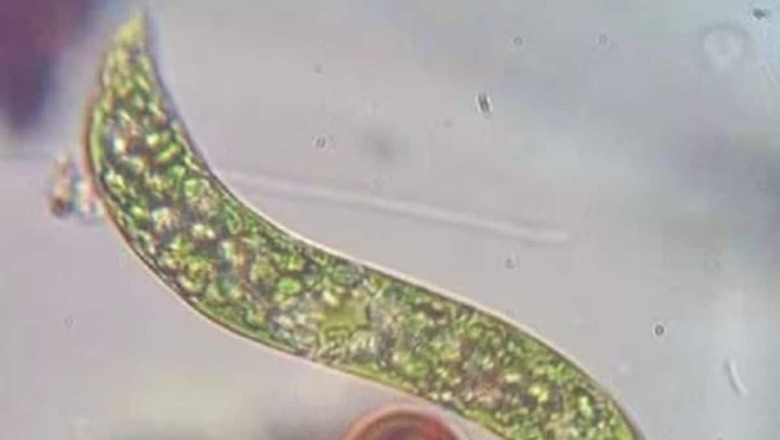
views
Nature often surprises everyone with its magical creatures and one of them has been claimed to be recently discovered by scientists. The tiny creatures existing on the planet share similar traits with both plants and animals. Named Euglena, these creatures belong to the group Euglenoid. A bizarre fusion of a bunch of different living things, Euglenids are a group of unicellular eukaryotes. Their way of consuming energy includes both photosynthesis, like a plant, and eating other beings like animals.
Recently, an international team of scientists claimed to have discovered ancient Euglenid fossils that were hidden in “an extensive paper trail” of scientific research that has been published already. People have been misidentifying the shell-like fossils as possible worm eggs, algal cysts, or fern spores. This is because of the tiny circular ‘ribs’ on the inside. Even though aquatic organisms split off from other eukaryotes, their fossil record for that time on Earth is not known.
The similarities of the creature with plants and animals have often bewildered researchers. One of the characteristics that has stumped experts is that the fossils span immense timelines. Andreas Koutsodendris, a researcher of microscopic fossils at Heidelberg University in Germany, says that he often comes across fossils of these oval lifeforms at the time of analyzing drill cores from lakes in Greece. He says, “In fact, the cysts are commonly figured in publications by colleagues, but no one was able to put a finger on it.”
Euglenoids are usually discovered in freshwater ponds, soil, and ditches. One needs a microscope to see them. With single cells, one to four flagella (hair-like protrusions), and a pellicle made of protein strips, euglenoids are known to feed on bacteria or algae. Some of the euglenoids also contain chloroplasts and they are known to produce their food by photosynthesis. These aquatic organisms also absorb nutrients from the water by osmosis – called osmotrophy. These unusual organisms will be a source of food, biofuels and pharmaceutical products in the future by the researchers.















Comments
0 comment